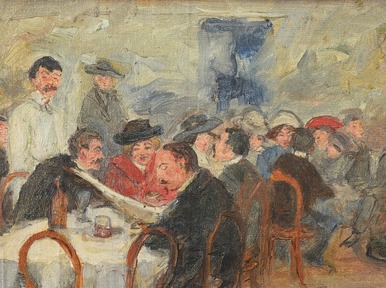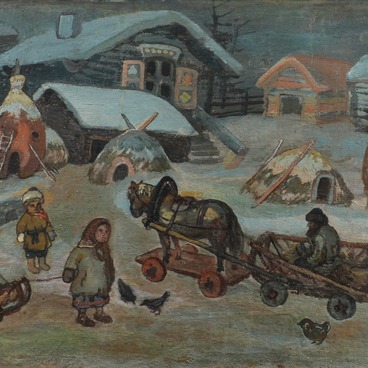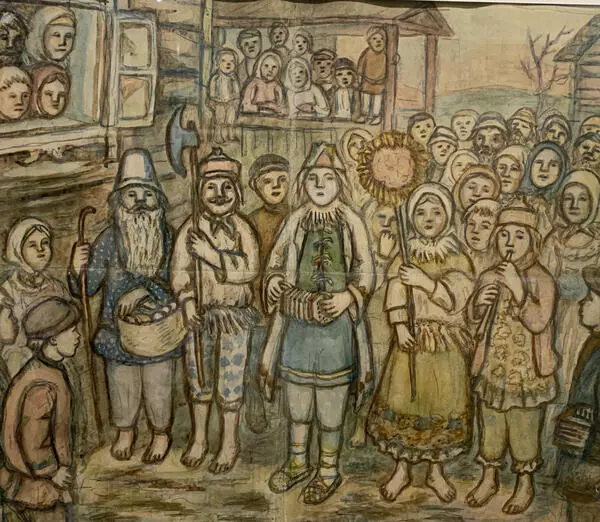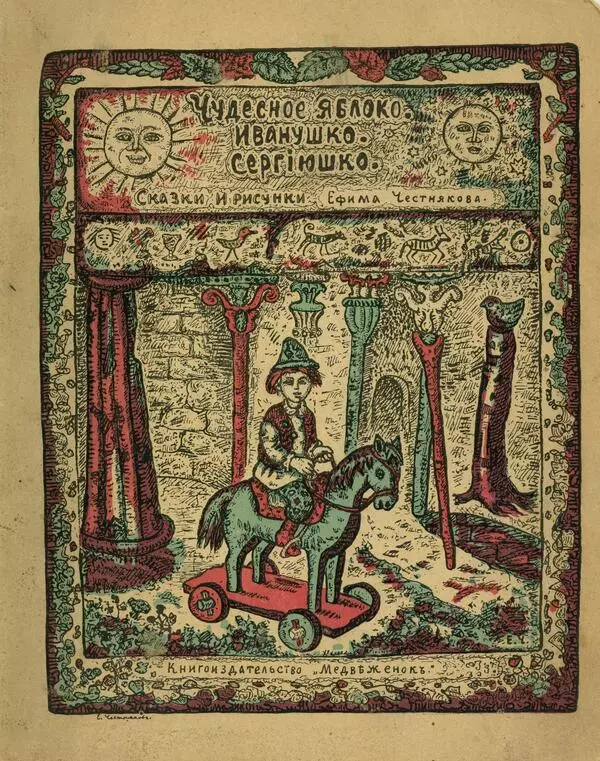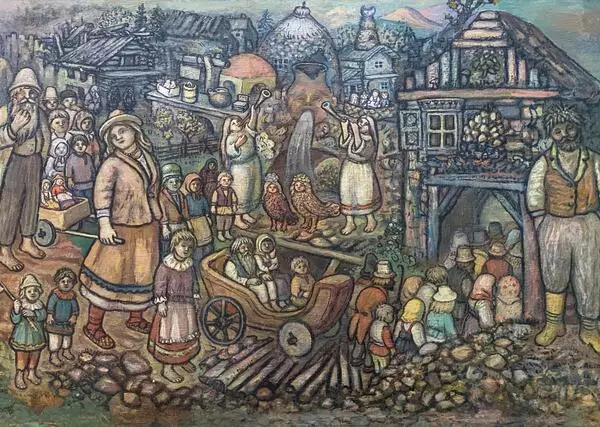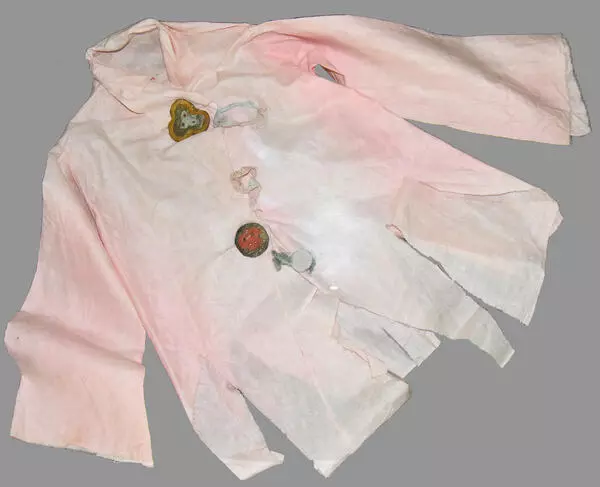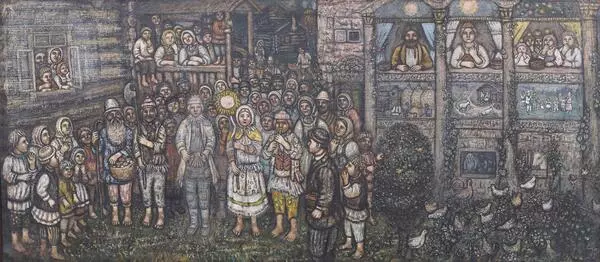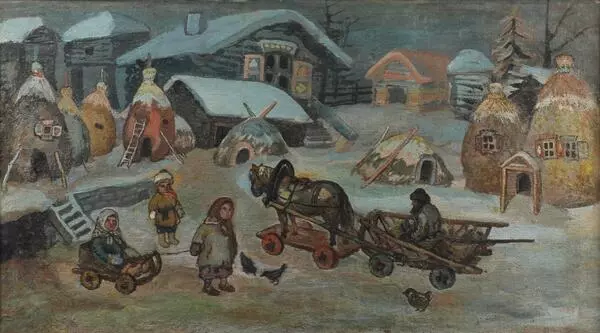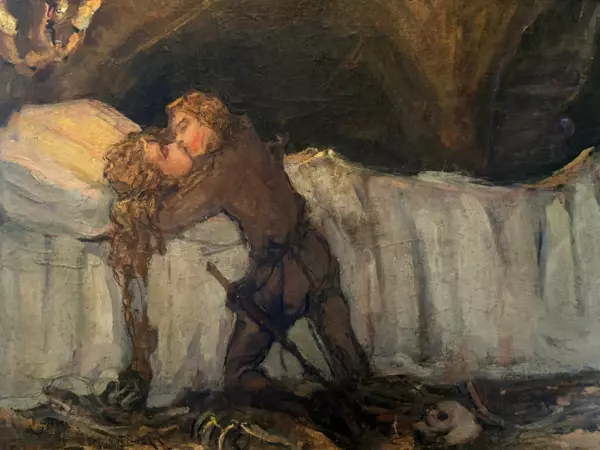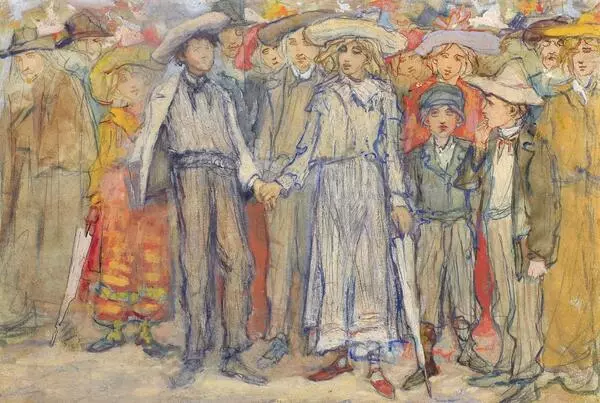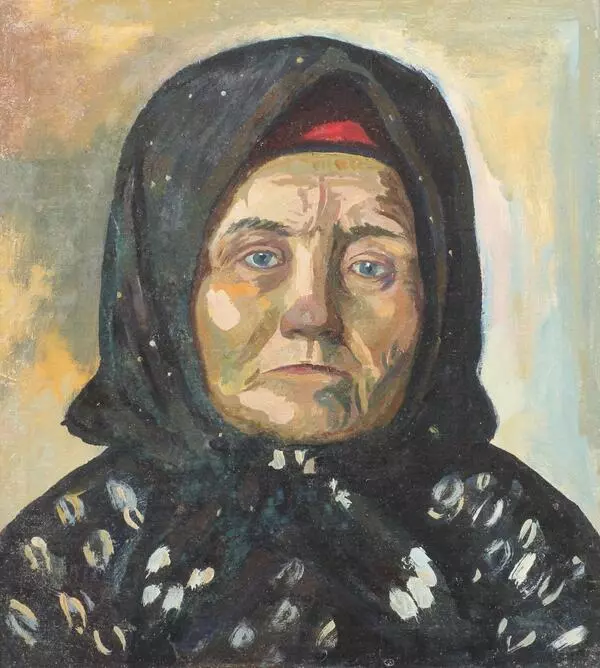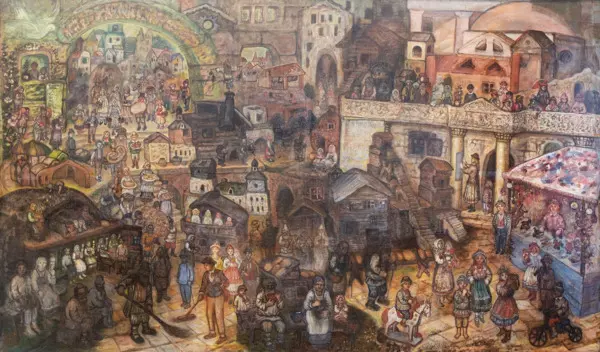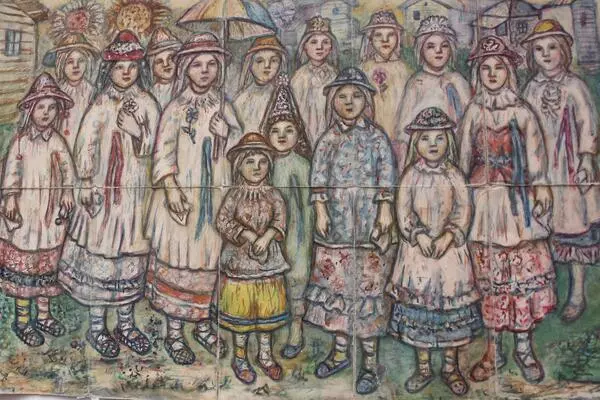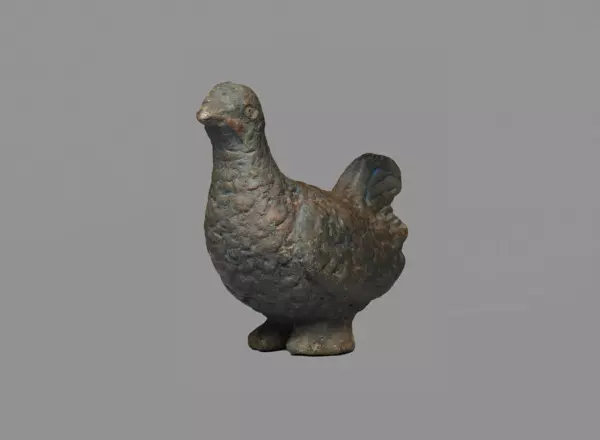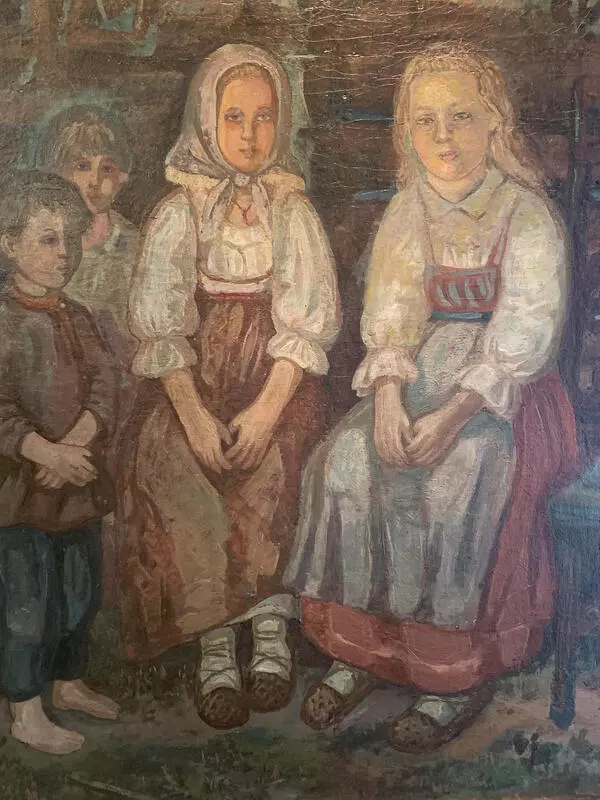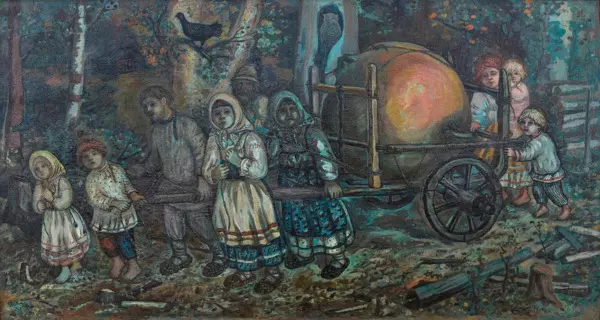There are recurring themes and subjects in Yefim Chestnyakovs literary and art works, and the spinner is one of them. After all, peasant girls needed to learn to spin yarn at an early age because, in the future, they had to make clothes and linen for their large peasant families. In addition, these young women made items for their own dowries, the size of which, in large part, determined whether they got married or not. Hand spinning, a skill rooted in ancient folk traditions, accounted for a substantial portion of the work women performed. For instance, making the sign of the cross at the start and end of the spinning process was meant to protect the yarn from being spoiled and damaged by a Kikimora. ‘The Large Spinner’ is one of the clay figurines made by Yefim Chestnyakov for his work ‘The City of Cordon’. Notably, he created several similar statuettes of various sizes for this art work, and despite their matching appearance, their poses, clothes and other elements differ. The spinner in front of us is a peasant girl wearing a white kerchief and sarafan (a pinafore dress). Her pose is typical of a peasant woman busy spinning yarn. Her left hand is deftly drawing fibers from the distaff tied to the spinner’s tool, while the right is winding the thread onto the spindle. In Yefim Chestnyakov’s literary works, there are many passages about spinning, an activity young women engaged in during autumn and winter gatherings. The following extract is an example:
Young beauties are sitting
and spinning delicate thread,
while their spindles are creaking.
They are talking about suitors,
the handsome beaus,
their intended and nothing more.
Yefim Chestnyakov is a painter, writer and a founder of children’s theater. When he was a young man, he worked as a teacher in the village of Zdemirovo of the Kostroma Governorate. After his transfer to Vichugsky Krai (territory), Yefim Chestnyakov began to write and paint. In fact, his creativity was highly regarded among local intellectuals. Benefactors paid for his 7 years of study in Saint Petersburg, and afterwards he returned to Shablovo. Several years later, after his first “retreat” to his village, he returned to Saint Petersburg to study. Once World War I started, he came back home for good, to the village of Shablovo where he worked for the rest of his life.
Young beauties are sitting
and spinning delicate thread,
while their spindles are creaking.
They are talking about suitors,
the handsome beaus,
their intended and nothing more.
Yefim Chestnyakov is a painter, writer and a founder of children’s theater. When he was a young man, he worked as a teacher in the village of Zdemirovo of the Kostroma Governorate. After his transfer to Vichugsky Krai (territory), Yefim Chestnyakov began to write and paint. In fact, his creativity was highly regarded among local intellectuals. Benefactors paid for his 7 years of study in Saint Petersburg, and afterwards he returned to Shablovo. Several years later, after his first “retreat” to his village, he returned to Saint Petersburg to study. Once World War I started, he came back home for good, to the village of Shablovo where he worked for the rest of his life.


